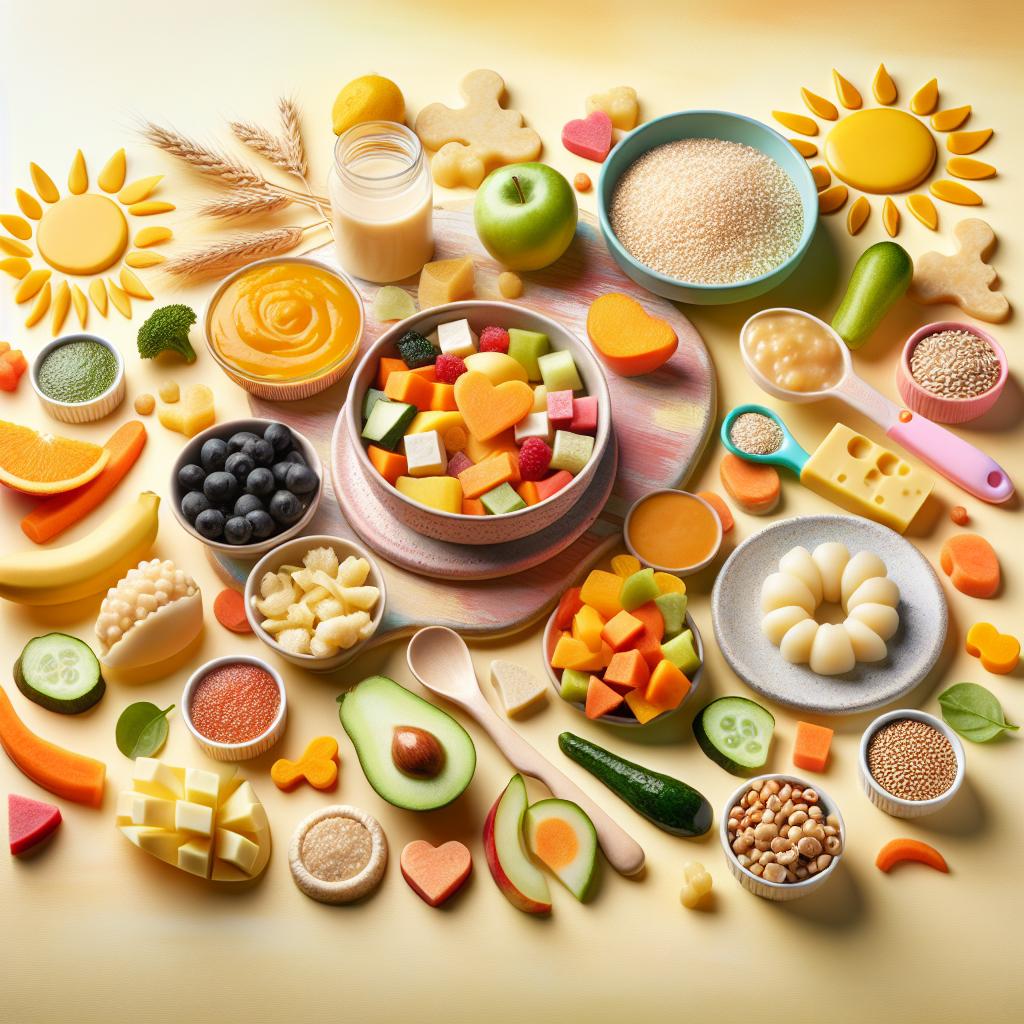A Healthy Approach to Transitioning Baby Foods: From Purees to Chunky
Transitioning your baby from purees to more solid, chunky foods is an exciting milestone. In this guide, we’ll explore the process of transitioning baby foods, offering you expert feeding tips to ensure a smooth and enjoyable progression for your little one.
Understanding the Importance of Transitioning Baby Foods
Transitioning from purees to chunky foods is a crucial stage in your baby’s life. It is more than just introducing them to a world of new flavors and textures. It is about:
– Promoting their oral motor development: When your baby transitions from purees to chunkier foods, they learn to chew and grind food, which strengthens their jaw muscles and supports speech development.
– Boosting their hand-eye coordination: Picking up and eating chunky foods also develops their pincer grip and hand-eye coordination, which are important for their overall development.
– Enhance their experienced palate: It helps them become more adventurous eaters, as they become used to various tastes and textures.
When to Start Transitioning From Purees to Chunky Foods?
According to the specialists from Children’s Hospital of Philadelphia, you can generally start introducing finger foods and chunky textures around 9 months, but it’s important to remember every baby is different. Importantly, your baby should be able to sit well unassisted, pick up food and bring it to their mouth, and have a “pincer” grip (the ability to pick up small objects between thumb and forefinger) before starting with chunkier foods.
Feeding Tips for the Transition
As you embark on this nutrition journey, here are some feeding tips from experts to help your baby transition smoothly:
– Gradual Approach: Instead of switching suddenly from purees to chunky foods, take a gradual approach. Begin by thickening the purees, then gradually add in soft, mashed chunks.
– Follow Baby’s Cues: Pay attention to your baby’s cues. If they are reaching for food, or seem interested in what you’re eating, they’re probably ready to try something new.
– Safe Foods: Select soft, easy-to-mash foods like ripe avocado, banana, or sweet potato as first chunky foods.
You can get more feeding tips and baby food recipes from Huckleberry Care. They even provide age-appropriate feeding guides that are amazingly helpful.
Moving Beyond Purees
As your child moves beyond purees, they’ll start experimenting with a wider range of tastes and textures. The John McGivney Children’s Centre suggests gradually introducing toast fingers, pasta spirals, and chopped fruit. Steamed and cooled veggies are also great for little fingers. And don’t forget protein! Soft-cooked meat, beans, and scrambled eggs can all be introduced easily.
Remember, Patience is Key
Transitioning baby foods from purees to chunky is a journey that requires patience. It’s normal for babies to reject new textures initially. But don’t lose heart, keep introducing and reintroducing foods in a calm, encouraging atmosphere. With time and patience, your child will soon be enjoying a variety of nutritious, chunky foods.
The Solid Starts website is a great resource for parents navigating the transition from spoon-feeding to finger food. It offers a wealth of information on baby-led weaning, food safety, and more.
The Gap between Purees and Chunky Foods
A question many parents grapple with is, what is the step in between purees and chunky food? The answer to this lies in textured foods. Textured foods act as that bridge, introducing your baby to new and varying consistencies in a controlled manner.
Begin with slightly lumpier purees, so they’re not completely smooth but have small, soft chunks of food in them. You can achieve this simply by mashing instead of pureeing the food. Gradually increase the chunkiness of the food as your baby gets used to the new texture.
Nutritional Needs During Transition
During this transition phase, a balanced diet is crucial to support your baby’s growth and development. Nurture Life provides a variety of nutrient-dense toddler meals that can be easily incorporated into your little one’s diet. These are correctly portioned and feature a range of healthy ingredients.
What Foods Can You Start With?
The introduction of chunky foods should include a variety of food groups ensuring a mix of texture and taste:
– Fruits: Certain fruits like banana and avocado can be cut into small pieces. These are often the easiest foods to start with due to their natural sweetness and soft texture.
– Vegetables: Steamed vegetables like carrots, peas, or sweet potatoes can be mashed or cut into soft chunks.
– Grains: Cooked pasta, cut into small parts, can offer a fun and familiar texture for your baby’s little fingers.
– Protein: Soft meats, lentils or beans can be an appealing new addition to their diet.
Remember to introduce one food at a time and monitor for any allergic reactions before moving on to the next.
The Role of Baby-led Weaning
If your baby is showing signs of self-feeding, consider trying baby-led weaning. This approach encourages your baby to feed themselves, helping to improve their hand-eye coordination and pincer grip.
However, it’s essential to ensure the foods are safe and developmentally appropriate. Little Spoon offers a variety of BabyBlends that are designed for finger feeding and facilitate self-feeding.
Continued Support during Transition
Transitioning from purees to chunky foods is a crucial phase in your child’s growth, and you should continue to gain expert advice during this time. The Johns Hopkins Medicine website offers invaluable insight on what to do and what not to do during this crucial phase.
Remember, this transition demands patience and a willingness to let your baby explore at their own pace. Endeavor to keep the experience fun and positive, and soon, your little one will master the art of self-feeding.
